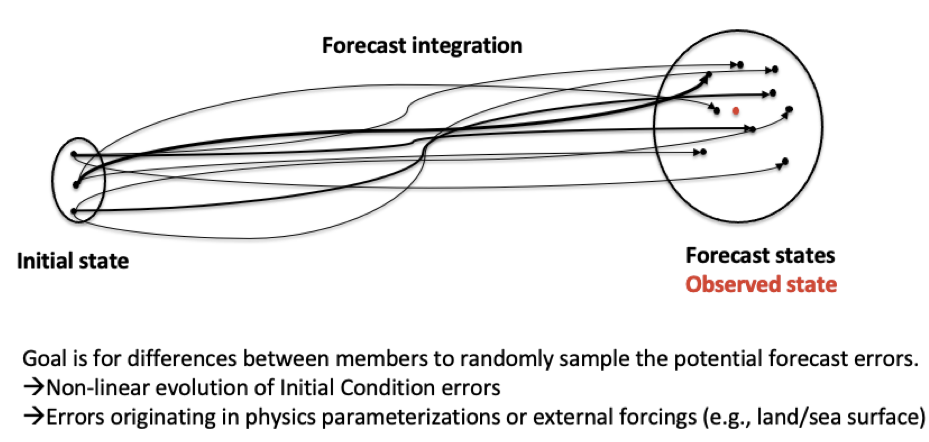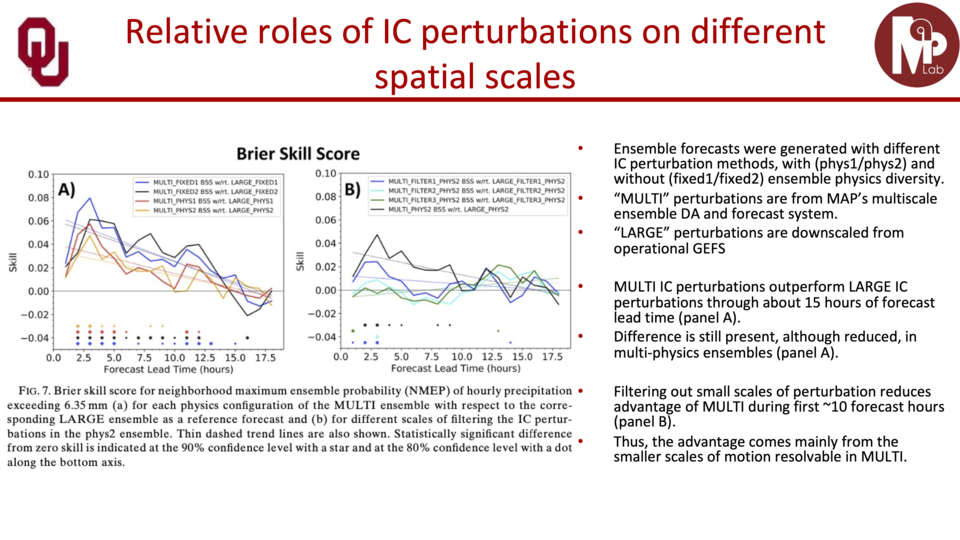[Introduction]
Ensemble forecasts provide improved skill compared to deterministic forecasts, and allow for quantification of forecast uncertainty. The ability to estimate forecast uncertainty, and the relationship between forecast errors in one model variable and errors in other model variables, also make ensemble forecasting a critical component of many data assimilation methods. If different ensemble members properly sample the uncertainty in the initial state and the NWP model dynamics/physics, then the spread of ensemble member forecasts provides a probability distribution of a future state rather than a single “best-guess” future state forecast:

MAP lab conducts research on optimal methods of sampling both initial condition and model uncertainties in the generation of ensemble forecasting for multi-scale forecasting and data assimilation applications. Examples of recent research highlights on this topic include:
* ======================================================================== *
Highlights of Recent and Ongoing Research
[Evaluating relative roles of convective-, meso- and synoptic-scale initial condition perturbations]
Other related papers Johnson and Wang (2016)

[Evaluating methods of sampling model-related uncertainty in ensemble design]
From Gasperoni, N. A., X. Wang, et al. (2020)

[Optimizing methods of blending initial condition uncertainty on multiple spatial scales]

[Increased samples of initial condition uncertainty through Valid Time Shifting]
From Gasperoni, N. A., X. Wang, et al. (2022a); Gasperoni, X. Wang et al. (2022b; In Review)



